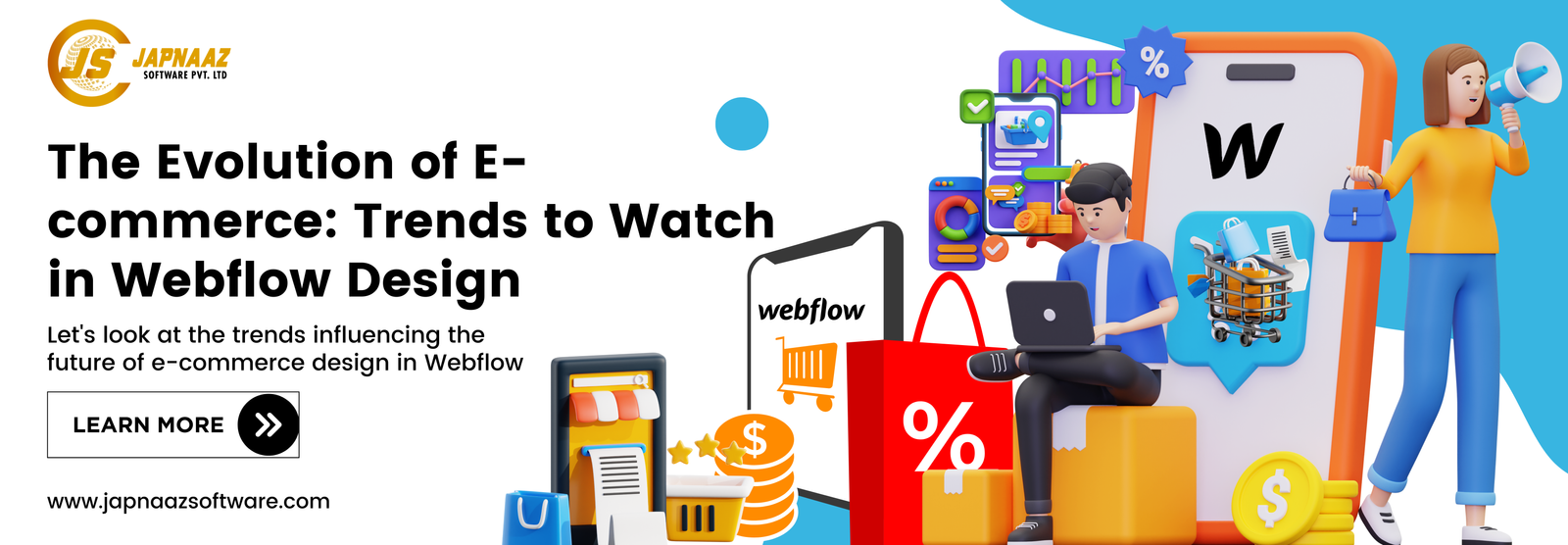
In the ever-changing landscape of online commerce, design is essential for capturing and maintaining consumers' attention. With Webflow emerging as a powerful tool for web design, it's fascinating to see how e-commerce design has evolved on this platform. Let's look at the trends influencing the future of e-commerce design in Webflow:
Responsive and Mobile-First Design: As mobile usage increases, e-commerce websites must prioritize responsiveness. With Webflow's flexible layout options, designers can create seamless experiences across multiple devices, ensuring accessibility and usability for all users.
Minimalism and Clean UI: Simplified and clutter-free interfaces are becoming popular in e-commerce design. Webflow's user-friendly drag-and-drop interface enables designers to create sleek and minimalist aesthetics while maintaining functionality and user engagement.
Personalization and Customization: Tailoring the shopping experience to individual preferences has become essential. Designers can create personalized experiences that resonate with users using Webflow's advanced features, such as dynamic content and interactions, resulting in increased conversion and retention.
Immersive Visual Storytelling: Visual storytelling has emerged as an effective tool for engaging customers and communicating brand narratives. Designers can use Webflow's robust visual capabilities, such as animations and scroll effects, to create immersive storytelling experiences that captivate audiences and foster emotional connections with brands.
Integration of Augmented Reality (AR) and Virtual Reality (VR): As technology advances, incorporating AR and VR elements into e-commerce websites has become more common. Webflow's support for custom code and third-party integrations enables designers to incorporate immersive experiences, allowing customers to see products in real-world settings and improving the overall shopping experience.
Seamless Checkout Processes: Streamlining the checkout process is critical for lowering cart abandonment and increasing conversions. Webflow's customizable form elements and e-commerce integrations allow designers to create seamless checkout experiences that are tailored to the needs of their clients and target audience.
Accessibility and Inclusivity: Designing with accessibility in mind is both a moral imperative and a legal requirement in many jurisdictions. Webflow's accessibility features, combined with best practices in inclusive design, allow designers to create websites that are usable by people of all abilities, ensuring equal access to products and services.
To summarize, the evolution of e-commerce design in Webflow is characterized by a focus on user-centricity, aesthetics, and functionality. By embracing these trends and utilizing Webflow's versatile tools, designers can create compelling e-commerce experiences that drive engagement, foster brand loyalty, and ultimately increase sales.